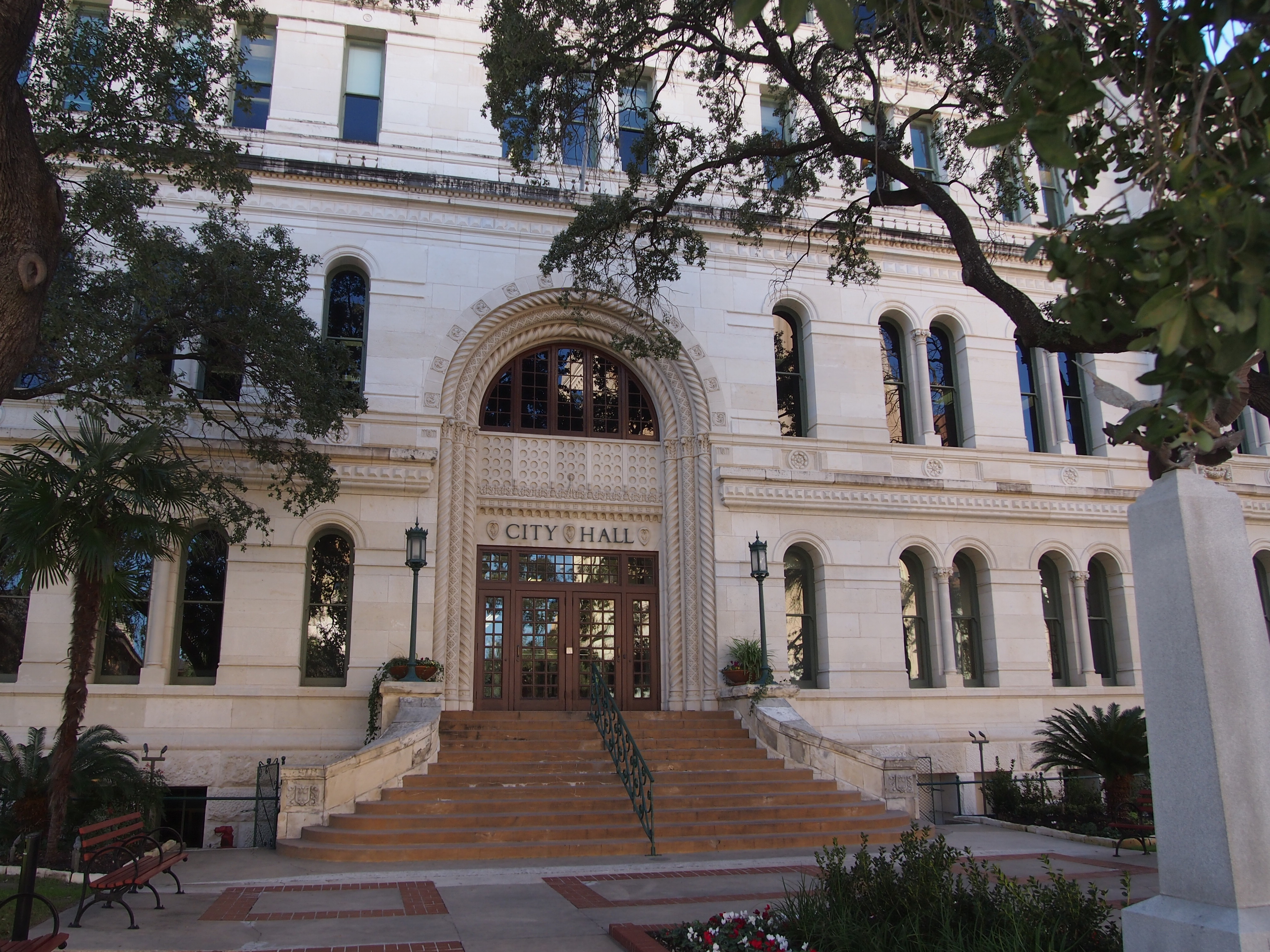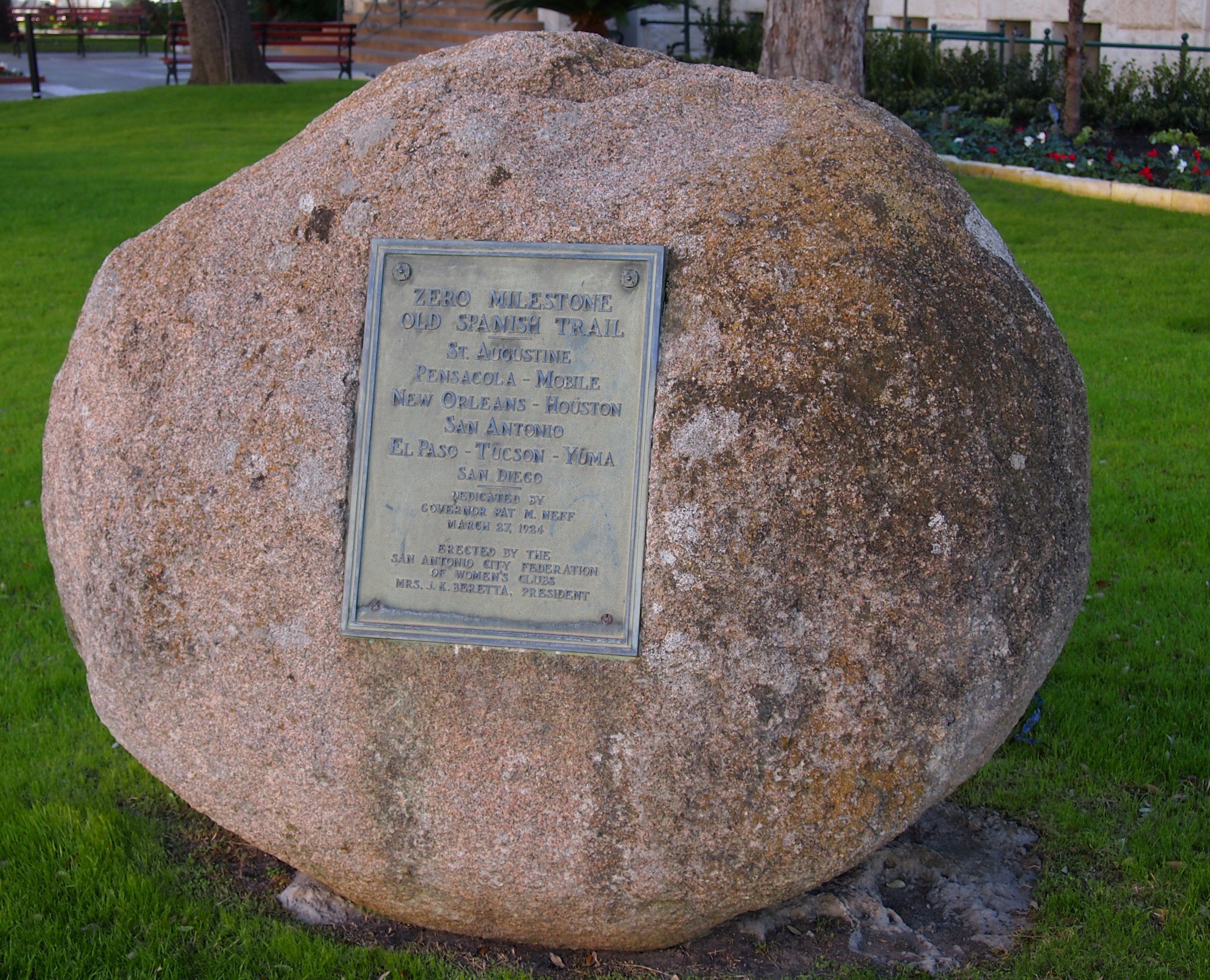From San Fernando Cathedral, I made my way past San Antonio City Hall, which is a handsome Italian Renaissance Revival structure dating from the 1880s.
 Among the other monuments and markers on the grounds is a boulder with a plaque stuck to it. I have to say I’m a sucker for boulders with plaques stuck to them. This one’s apparently been there over 90 years.
Among the other monuments and markers on the grounds is a boulder with a plaque stuck to it. I have to say I’m a sucker for boulders with plaques stuck to them. This one’s apparently been there over 90 years.
 ZERO MILESTONE
ZERO MILESTONE
OLD SPANISH TRAIL
St. Augustine – Pensacola – Mobile – New Orleans – Houston – San Antonio – El Paso – Tucson – Yuma – San Diego
Dedicated by Governor Pat M. Neff
March 27, 1924
Erected by the San Antonio City Federation of Women’s Clubs
Mrs. J.K. Beretta, President
Zero milestone, eh? Odd, considering that San Antonio is roughly in the middle of the route described by the cities on the plaque. This Old Spanish Trail, incidentally, has nothing to do with Spanish colonialism in North America, except that it passed through territories that were at one time or another part of the Spanish Empire. The OST was a 20th-century invention. (Confusingly, OST also refers to an earlier, non-motorized trail between Santa Fe and Los Angeles that did involve actual Spaniards.)
As this excellent article published by the Texas Transportation Museum notes, “…a very grand vision arose for a continuous highway from the Atlantic at St. Augustine in Florida to the Pacific in San Diego California, a distance of 2,817 miles…. The route was given a picturesque name, “The Old Spanish Trail,” as a marketing tool, much as naming the first Northern transcontinental route from New York to San Francisco, “The Lincoln Highway,” first proposed in 1912. The names were designed to capture the imagination of cities and counties along the proposed routes and encourage participation in the construction of the route, as the OST organization could not even begin to pay for all the roads and bridges that would be required.”
But why is there a zero milestone in San Antonio? Google “zero milestone Old Spanish Trail” and you’ll also find information about a plaque on a sphere in St. Augustine — dating from 1928.
Back to the Texas Transportation Museum article: “Governor Neff dedicated an OST zero milestone outside San Antonio city hall in March 1924. It is still there today… The first ceremonial drive across the 2,817 miles of continuously improved road, lined with signs put up by each state, began in San Diego, California on April 4 1929. Their arrival in San Antonio was ceremoniously greeted with a dinner at, of course, the Gunter Hotel.”
That doesn’t really answer the question. Maybe the San Diego-San Antonio stretch was finished first. Or more likely, the San Antonio City Federation of Women’s Clubs really wanted a marker.
The Zero Milestone was to set your odometer to zero. You know how far the marker in New Mexico or Louisiana is from this one, so when your odometer gets close to that number, you start looking to make sure you’re on track. I suppose that when this road was named, odometers weren’t entirely reliable, so having a reset at a known spot could be helpful.